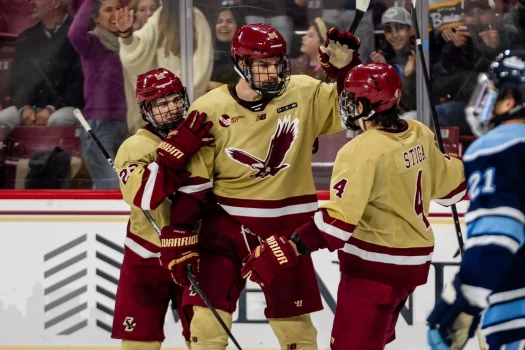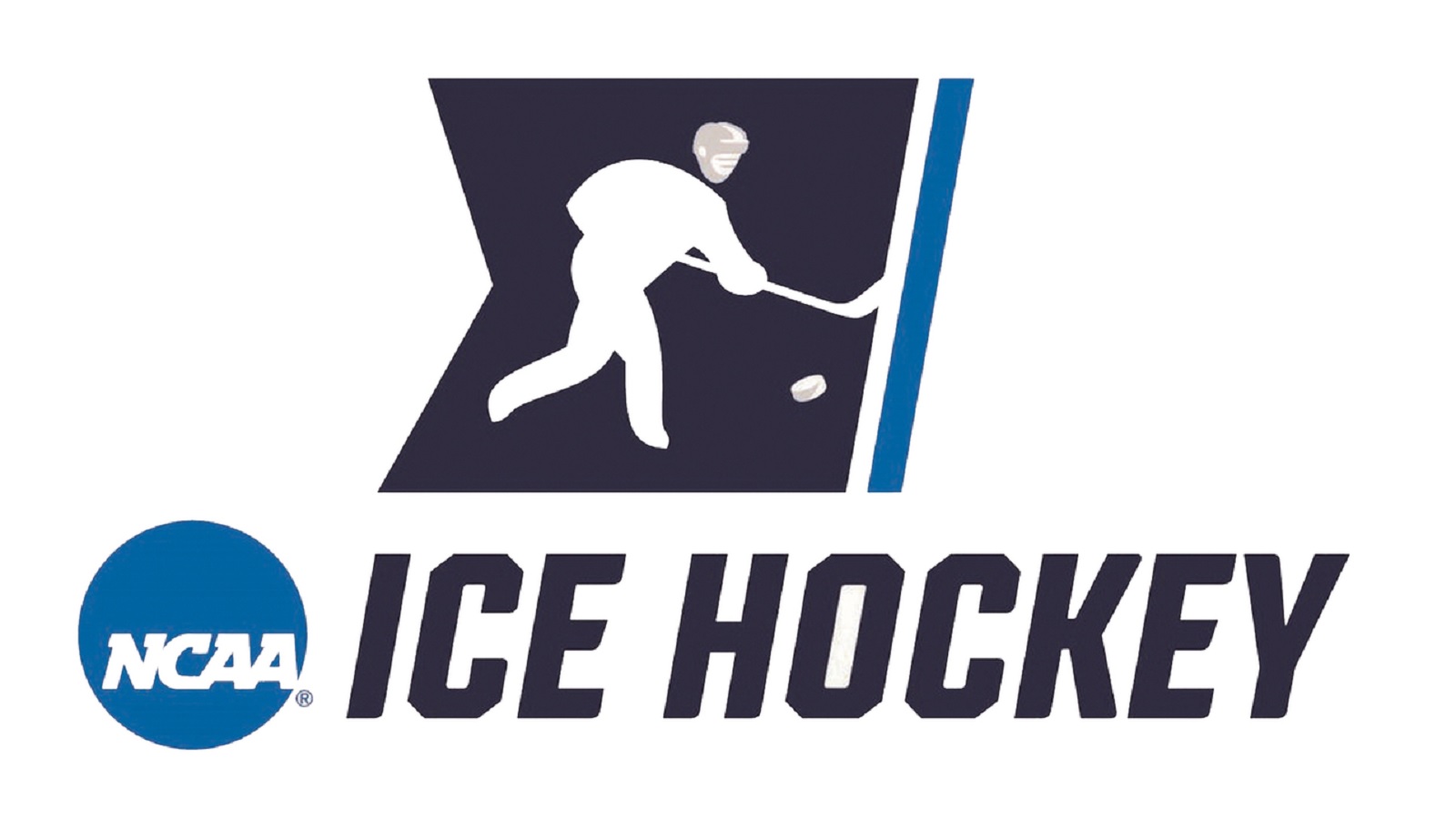An early look at the NCAA hockey tournament field

In the NHL, there is the infamous cut-off date of Nov. 1 that all teams keep an eye on.
In the cap era, if you're more than four points out of a playoff spot on that date, the odds that you’ll make the playoffs are extremely low. It’s not as though your season is over, certainly, but a lot has to go right for you and wrong for someone else to make that step into the post-season.
In college hockey, a similar kind of cut-off exists: Nov. 11.
If you are not in the top 15 in the Pairwise on that date, your odds of making the NCAA tournament in March are fairly low. Since the tournament field expanded to 16 teams in 2003-04, almost 61 percent of teams in the top 15 on Nov. 11 end up making the cut. That leaves somewhere between four and six teams per year who started strong feeling left out by the end of the season.
Last year, that number was five: No. 6 Providence, No. 8 New Hampshire, No. 10 Alaska, No. 14 St. Cloud, and No. 15 Arizona State. In retrospect, it might seem easy to predict some of those declines. UNH had gone from being an 11-win team the year before to start 4-2-1 with wins over teams like BU, Quinnipiac, and Providence. They went on to win 20 games, which is impressive, but dropped some results to weaker teams, and their tournament chances tanked down the stretch. The two independents — Alaska and Arizona State — were always going to be in precarious positions because of their average quality of opponent; any losses would disproportionately hurt them, and they obviously could never go undefeated, or even close, for the final 25 or so games of the season. It’s worth noting, though, that the non-independent teams on that list finished Nos. 16-18 in the Pairwise, all narrowly missing the cut, to the point where even one or two extra regulation wins would have flipped the switch.
Teams outside the top 10 are the most vulnerable to being leapfrogged by a team that got off to a slower start, but historic qualification rates get pretty strange, pretty fast. For example, only two-thirds of all teams that were No. 4 on Nov. 11 made the tournament at all (compared to 80-plus percent for everyone in the top three and almost three-quarters for the No. 5 team).
But that was then, and this is now.
Here are the current top-15 in the Pairwise, following Sunday’s all-important BC/Maine matchup:
- Denver
- Boston College
- Dartmouth
- Cornell
- Michigan State
- Minnesota
- Maine
- Western Michigan
- St. Cloud
- Ohio State
- Providence
- Michigan
- Harvard
- Boston University
- Minnesota State
Today, we can safely assume that white-hot start for Denver won’t fade enough to hurt their chances, even if we can project with some confidence that they won’t go undefeated.
Likewise, we can count teams like Boston College as safe, both because we should expect them to keep winning far more than they lose, and because their quality of competition is absurdly high, having already played the Nos. 5, 8, 9, and 7 in the Pairwise. Their only loss to date was to No. 5 Michigan State, on the road, in the second game of the season.
For basically any team in either the NCHC, the Big Ten, or Hockey East, losing in conference won’t hurt much because they have multiple teams in the top 10 right now, so their strength of schedule should remain solid for the rest of the season. Barring big losing stretches for Providence, BU, or Michigan — which are possible but perhaps unlikely, given their talent levels and overall team quality — those teams aren’t quite safe outside the top 10, but they’re not overly exposed to drop-out risk either.
Much like Alaska and Arizona State being in the top 15 at this time last year, some teams jump off the page as more vulnerable than others. For example, Dartmouth is currently third in the nation in the Pairwise, and while they’re undefeated (4-0-0) with a plus-10 goal difference, even one loss could seriously destabilize their standing right now because they’ve played so few games relative to most other teams.
To be fair, the ECAC is off to a strong start, at a .569 out-of-conference winning percentage. That would put the teams expected to do well in that conference, which includes Dartmouth, in a similar spot to some of the mid-tier Hockey East or Big Ten teams, where they’re relatively safe but not exactly able to let anything slip too badly. Moreover, conference losses to some of the weaker teams in the ECAC could be debilitating to the Big Green’s NCAA tournament hopes. The same is true of Cornell, expected to be the best team in the ECAC, and who knows what to make of Quinnipiac’s uncharacteristic sub-.500 start? Harvard is likely in the same boat as Dartmouth, at 2-1-0. Too few games to really know if they’re any good, but the Crimson weren’t rated as highly coming into the season.
The only other team in the top 15 that feels truly vulnerable to dropping out is Minnesota State. The Mavericks are currently 7-4-1, and their position is buoyed by wins over Michigan and North Dakota. Otherwise, most of the teams they’ve beaten aren’t very good, and the CCHA collectively doesn’t look very strong this year — but if they keep beating weak teams at the same rate they have so far, it won’t matter. As far as the Pairwise goes, it’s always better to beat a bad team than lose to a good one.
So that’s three teams that feel likely to drop off, and maybe one or two more from the leagues that have generally fared better to start the year. That gets you to the normal four or five teams that will probably fall out of the top 15. Who, then, might slide into those spots? It probably won’t surprise you that most of the rest of the current top 20 feel like good options. The most obvious right now is undefeated Colorado College. The Tigers have few too many points given away in OT right now to be in the top 15, but 8-0-0 is as good as it gets, on paper. And 5-4-0 North Dakota should be fine as well; their losses are all to current top-15 teams (Minnesota State, BU, and Cornell). In both cases, just playing and winning more conference games in the NCHC will boost their quality of competition, and they’re widely expected to keep racking up wins all year.
It’s hard to know what to make of No. 17 UMass Lowell, too. They’re 6-2-0, but their quality of competition isn’t great. They just split with BU this weekend, which feels about right for where both teams are at right now, and their other loss was to expected mid-table NCHC team Minnesota Duluth. They’ve outshot their opponents by a pretty wide margin, which is good. But they probably won’t shoot 12.5 percent all year, and they were pretty poor offensively last year, so it’s tough to know what their "true scoring talent" is. At this point, all they can do is beat lower-rated opponents, and they’re doing that. If they keep it up, they feel like a probable NCAA qualifier.
Then there are some slow-starting teams expected to perform better than they have been. Quinnipiac, UMass, Clarkson, and Northeastern fall into that category. You also have to account for the fact that you’re basically guaranteed at least two conference winners that wouldn’t have received an at-large bid, and obviously, it’s tough to predict tournament performance five months in advance.
But the fact remains: We know a lot about the makeup of the tournament field even this far in advance, just because the first six weeks of the season do so much table-setting.


